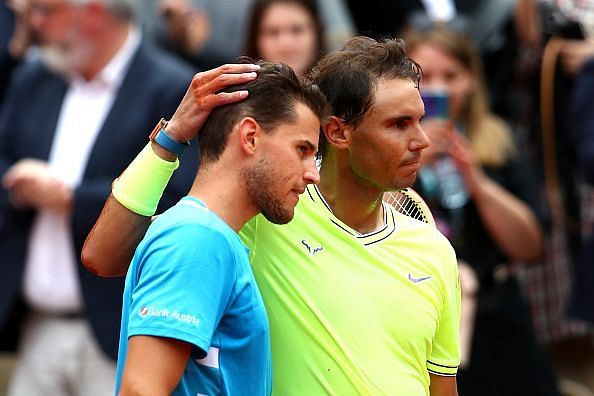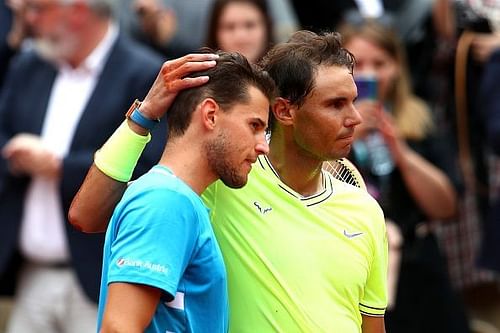
Can Dominic Thiem transcend his clay game on to non-clay surfaces to become an all-surface player in the future?

When Rafael Nadal first burst onto the scenes, he made clay surface as his own domain right from the get-go. The Spaniard, who was just a teenager back then, won his first nine titles on the red dirt including his maiden Roland Garros title in 2005.
While he emphatically dominated the clay season in the year 2005, tennis experts, at the beginning of his career, would have pondered over his ability to transcend his clay prowess on non-clay surfaces as well.
Slowly but surely, after each passing tournament, the Spaniard’s stature started to grow not only on clay but also on hard and grass courts.
By winning Wimbledon title in 2008 and Australian Open and US Open crowns in subsequent years in 2009 and 2010 respectively, Nadal established himself as one of the very few players to complete a career Grand Slam and in the process answered critics’ questions as well to become an all-surface player.
While Nadal did manage to evolve brilliantly over the years, Dominic Thiem, who is perhaps the second-best player on clay on current form, has found himself in a bit of stranglehold following his disappointing, lacklustre first-round exits at Wimbledon and US Open this year.
While Thiem was in prime-form in the first half of the year, especially in the clay season, the 26-year old Austrian has gone off the boil since his loss against Rafael Nadal in the French Open final earlier this June.
The Austrian is yet to win a French Open but has become a model of consistency on the red dirt of Paris for about four years now.
The 2018 and 2019 French Open runner-up and 2016 and 2017 Roland Garros semi-finalist Thiem, however, is yet to find his feet on non-clay surfaces, especially on grass.
As far as Thiem is concerned, his indifferent form and inconsistencies in his game have been the reasons for his downfall on non-clay surfaces.

Thiem recorded stunning wins over Milos Raonic and Roger Federer in the semi-finals and finals respectively to bag his maiden Masters 1000 title earlier this March on the hard courts at Indian Wells.
The way the Austrian held Rafael Nadal at bay in their quarter-final contest at the US Open 2018 after overcoming 2017 US Open runner-up Kevin Anderson in straight sets in the earlier round was encouraging as far as his development as an all-surface player is concerned.
However, his struggles to achieve consistency in his performances has been bothering the 26-year old Austrian ever since he stepped on the grass courts at Wimbledon.
Although it is true that Thiem was undercooked and bogged down by illness before he approached the North American hard-court season this year, his career win-loss record and numbers so far on non-clay surfaces are significantly lower as compared to his impressive record on clay.
Thiem, who was the 4th seed at the recently concluded US Open, has tremendous potential and game to flourish not only on clay surfaces but also on the non-clay surfaces.
Out of the 22 finals Thiem has been a part of, he has just played five finals on non-clay surfaces and has 10 out of his 14 titles on clay.
While Thiem has been a dominant force on clay for a while now, which involves beating the likes of ‘Big 3’ of men’s tennis on a fairly consistent basis as well, the question is can he transcend his game so as to prosper on hard-courts and grass-courts as well to become an all-round, an all-surface player?
With upcoming Masters 1000 events at Shanghai and Paris and Nitto ATP finals yet to be played, Thiem still has a lot of opportunities at his disposal to amend his fortunes this year as well before he attempts to unleash himself in the 2020 season, especially at the Grand Slam and Masters 1000 tournaments.
Only time will tell how far Dominic Thiem can advance in his quest to become an all-surface player. Well, it would be fascinating to follow Thiem’s journey in the rest of the 2019 season and beyond!